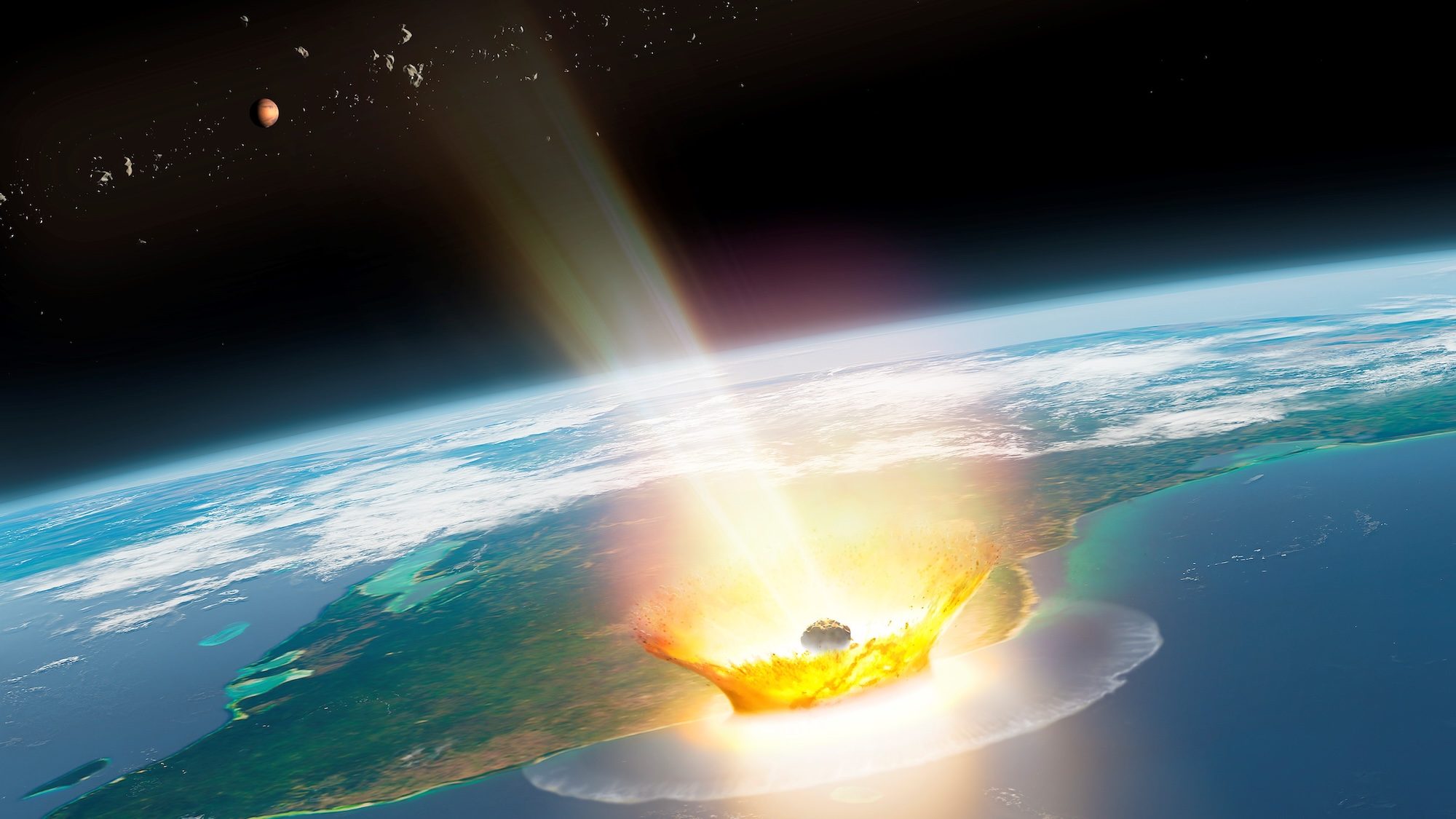

The asteroid likely responsible for wiping out roughly 75-percent of all Earth’s species, including non-avian dinosaurs, wasn’t just one of the planet’s rare mass extinction events—the culprit space rock was a cosmic rarity in itself. In a study published August 15 in the journal American Association for the Advancement of Science (AAAS), an international research team reveals the famous Chicxulub impactor that separated the Cretaceous and Paleogene eras (also known as the K-Pg boundary) was an incredibly uncommon carbonaceous asteroid originating from beyond Jupiter’s orbit.
Earth has hosted extinction-level events of varying sizes over its lifetime, but only the “Big Five” arguably qualify as truly “mass extinction” situations. In each of these events, at least 70-percent of marine and terrestrial life disappeared as a result of severe changes to climate, food sources, and other necessities for life as we know it. The most recent mass extinction—the one that paved the way for humanity’s evolution—took place 66 million years ago after a roughly six-mile-wide asteroid slammed into the planet at a speed of about 12 miles-per-second.
[Related: An asteroid didn’t kill the dinosaurs by itself. Earth helped.]
Upon landing in the Gulf of Mexico in what is now the Yucatán Peninsula, the asteroid (named for the nearby modern-day Chicxulub Pueblo community) struck with the force of 100 teratons of TNT, or over a billion times the destructive force of the atomic blasts at Hiroshima and Nagasaki. Immediate aftermath included the creation of a 62-mile-wide, 19-mile-deep transient cavity, 620 mph winds, and a 2-mile-high tsunami that struck surrounding coastlines. Around 25 trillion metric tons of debris and ash also launched into the atmosphere, some of which soon fell back and ignited wildfires that destroyed 70-percent of the planet’s forests. The initial years following Chicxulub then saw a rapid rise in global temperatures due to the greenhouse effect, followed by a prolonged era of cooler temperatures that continued to stifle life and eradicate species. It is during this time that many experts believe non-avian dinosaurs completely died out, leaving a human-sized job opening for the role of Earth’s dominant species.

But while researchers can reconstruct these terrifying details in recent decades through careful geological examinations, the exact composition of the Chicxulub impactor has remained uncertain. To investigate the lingering questions, University of Cologne geochemistry professor Mario Fischer-Gödde and colleagues around the world gathered samples collected at the K-Pg boundary. At the same time, they also examined samples from five other asteroid impacts that occurred over the past 541 million years, along with spherules from Archaean-age impact-related layers dating as far back as 3.5 billion years ago. Finally, they also obtained pieces of two carbonaceous, or C-type, meteorites.
[Related: What would we do if an asteroid slammed Earth on July 12, 2038?]
While no theory is foolproof, the available evidence certainly points to the Chicxulub impactor serving as the K-Pg boundary’s catalyst. High levels of platinum-group elements (PGEs) are found at K-Pg boundary layers around the world. In addition to ruthenium, iridium, osmium, platinum, platinum, and rhodium are rare on Earth, but common in meteorites, so a global distribution is consistent with initiating a mass extinction.
After comparing the collection, Fischer-Gödde’s team discovered a uniformity throughout the K-Pg boundary’s ruthenium isotope signatures, which also closely aligned with those of the C-type meteorites originating outside the Solar System. In contrast, the other meteorites displayed Ru isotope compositions resembling more common salicaceous (S-type) asteroids that originate within the inner Solar System.
With this new evidence, researchers also confidently rule out a comet as the Chicxulub impactor and can now theorize about their ancient Archean samples. Like Chicxulub, these particles are consistent with carbonaceous chondrite asteroids, implying that deep space meteorites originating from far beyond Jupiter likely traveled to Earth as far back as the planet’s final stages of geological formation.
